“Fashion Has to Be Radical”: Demna Redefines Luxury at Balenciaga’s Winter 2024 Show
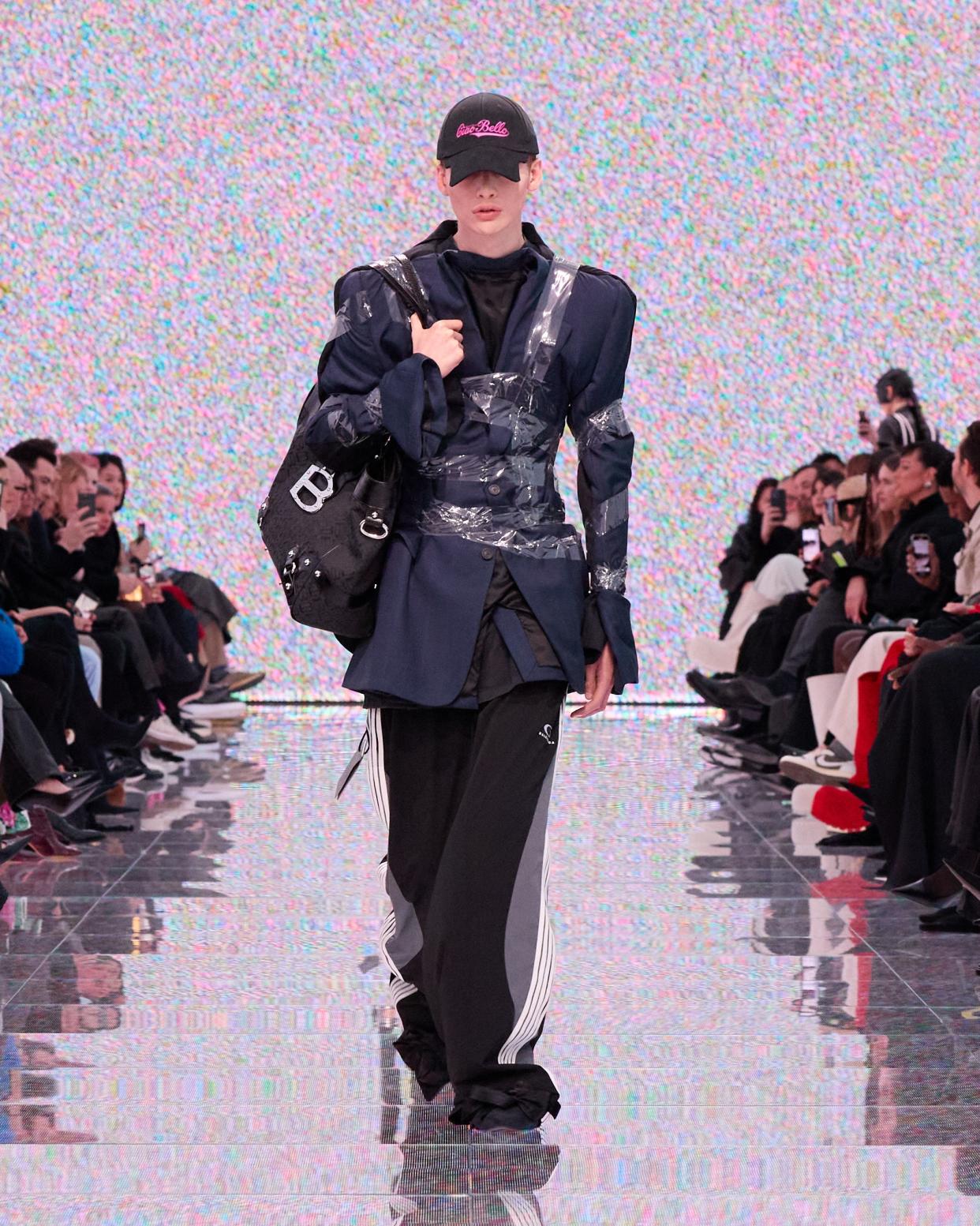
Courtesy of Balenciaga
This is an edition of the newsletter Show Notes, in which Samuel Hine reports from the front row of the global fashion week circuit. Sign up here to get it in your inbox.
Balenciaga creative director Demna is coming up on ten years since he dropped into the industry like a detonating grenade. In the decade since he founded guerilla fashion collective Vetements, the designer has profoundly challenged the status quo, forcing us to reconsider concepts so fundamental to fashion—like beauty and celebrity, and money and power—as he flipped them upside-down.
It would be natural to wonder if Demna’s still got the magic touch, the ability to turn just about anything into viral fashion gold. Creative director careers are getting shorter, not longer, thanks to a lot of factors but arguably due primarily to the way social media has accelerated trend cycles and our appetite for newness to mach-20. And, more practically, it’s gotta be hard to put out four thrillingly original collections year after year when you’ve been in the game for a decade. (The Georgia native joined Balenciaga in a surprise appointment in 2015, and left Vetements in 2019.)
But as we saw on Sunday morning in Paris, Demna is working with more urgency than ever, and still delivering novel and compelling ideas about clothing for our content-soaked times. In fact, as his anniversary looms, Demna has been thinking about the biggest idea that his work consistently confronts and questions: luxury.
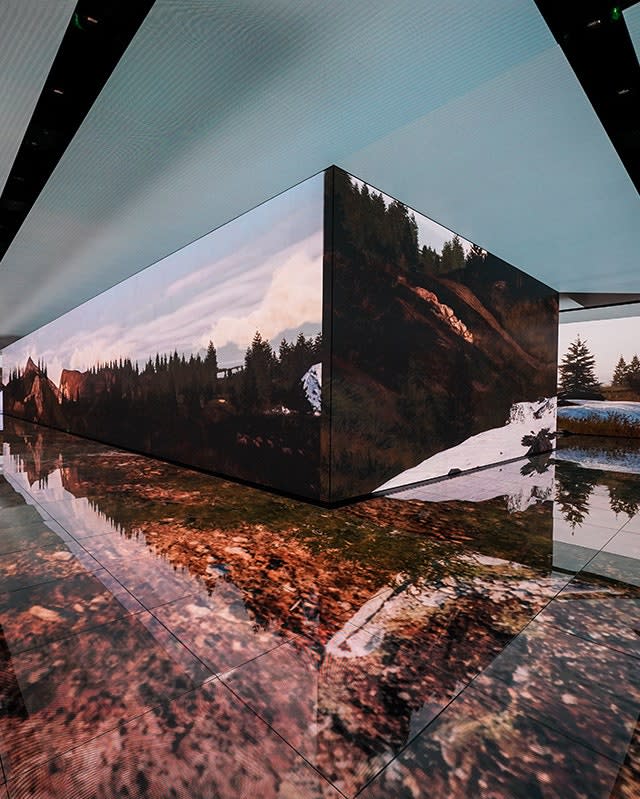
What is luxury, anyway? You couldn’t take more than a few steps into the venue for Balenciaga’s Winter 2024 runway show on Sunday morning without wondering. Surrounded by floor-to-ceiling video screens, there was Kim Kardashian wearing a dramatic black gown made out of what looked like delicate lace. Nearby, it was impossible to miss Thai actor PP Krit in his fire truck red velour Balenciaga tracksuit, shrunken to expose the plunging whale tail of his underwear. Somehow, both looked equally glamorous.
Demna didn’t invent designer loungewear, but he’s shifted our understanding of what constitutes high fashion by re-launching the Balenciaga’s couture atelier in 2021 and using it to make (among many exquisite red carpet-ready suits) dad jeans. There was also the semi-infamous 2022 “mud show,” which featured hoodies and the like that look as if they had been attacked with scissors then dragged through a bog, and then priced like tailored jackets. Demna doesn’t consider these acts provocations; he’s instead trying to move fashion forward by questioning it at every turn.
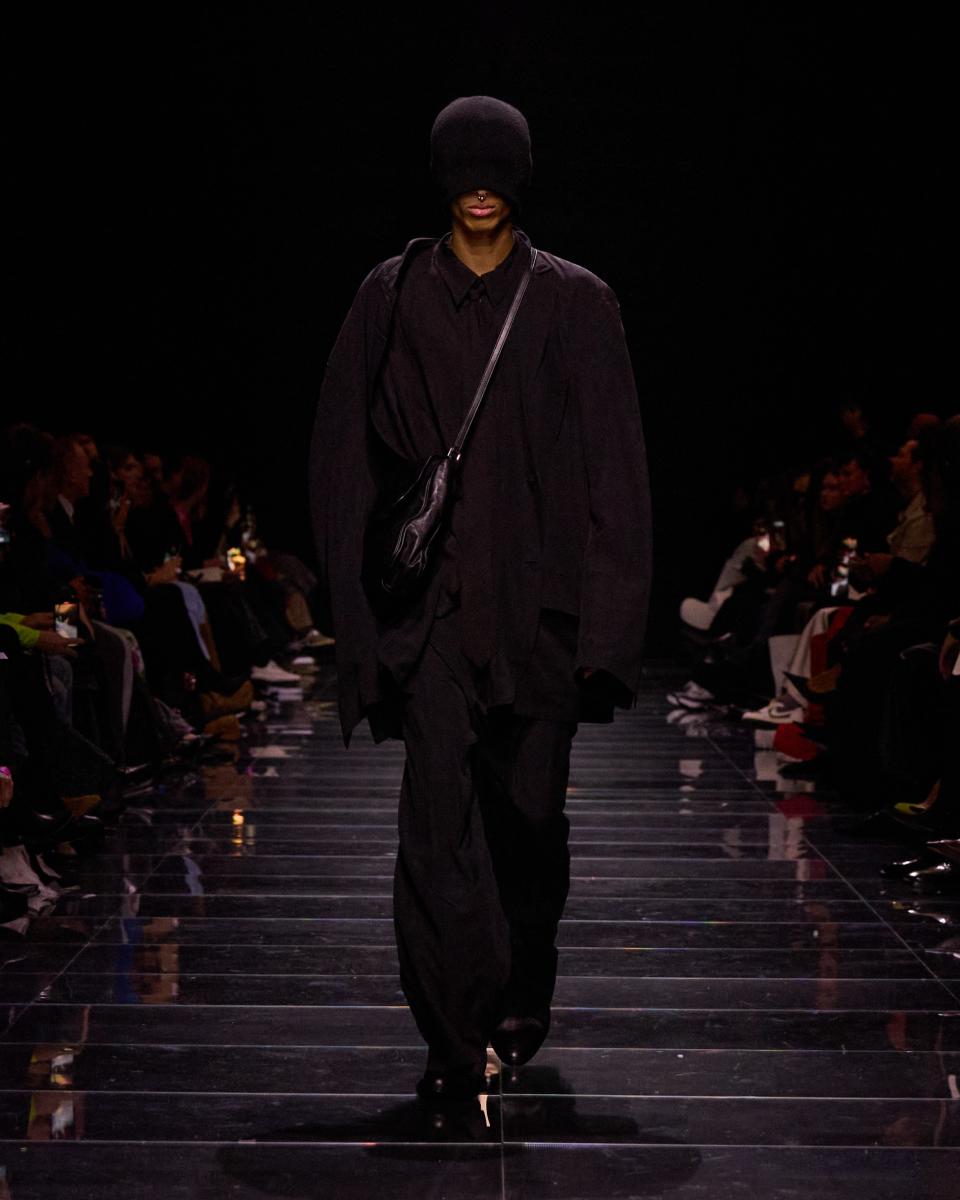
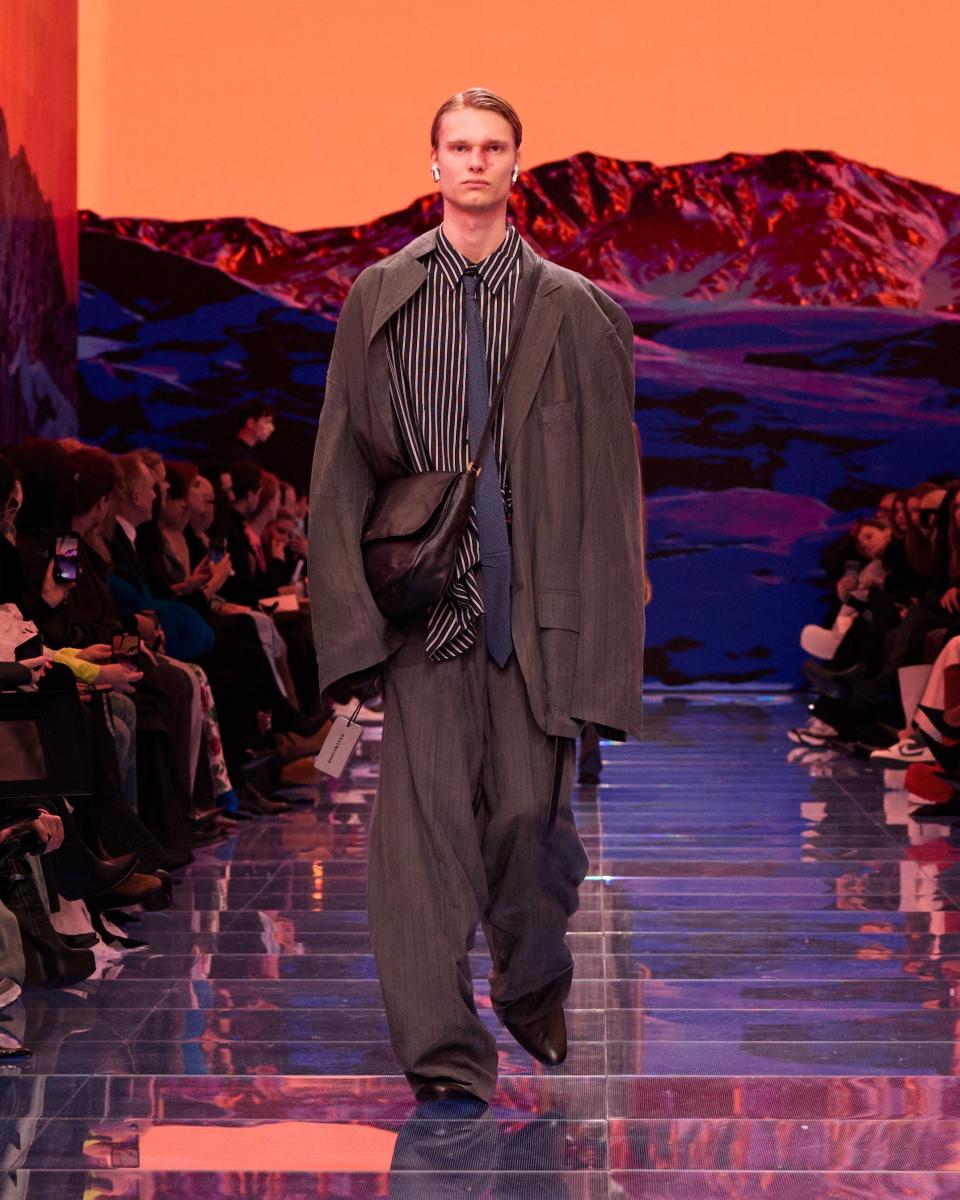
Demna’s latest idea about clothing is that luxury is creativity, something that’s been in short supply on the runways lately. “Luxury is by definition a sort of scarcity, something that is not infinitely available,” he said in a pre-show voicemail delivered to guests. “What seems to be truly rare and finite right now is, actually, creativity itself.” Neither luxury nor creativity were scarce on Sunday morning. The opening look was a showstopping embroidered couture gown, and the closing look another elegant, Cristóbal Balenciaga-inspired silhouette made entirely out of bras and underwear. In between, he presented a mix of surprising and strange pieces that are sure to ricochet around the internet alongside the subtlety and craft that are equally his signature.
The collection, he explained backstage, was deeply personal. “This show has to represent me and my style,” he said. “I think there is a big difference between fashion, luxury, and style. And I think style is very important today because it's an individual point of view.”
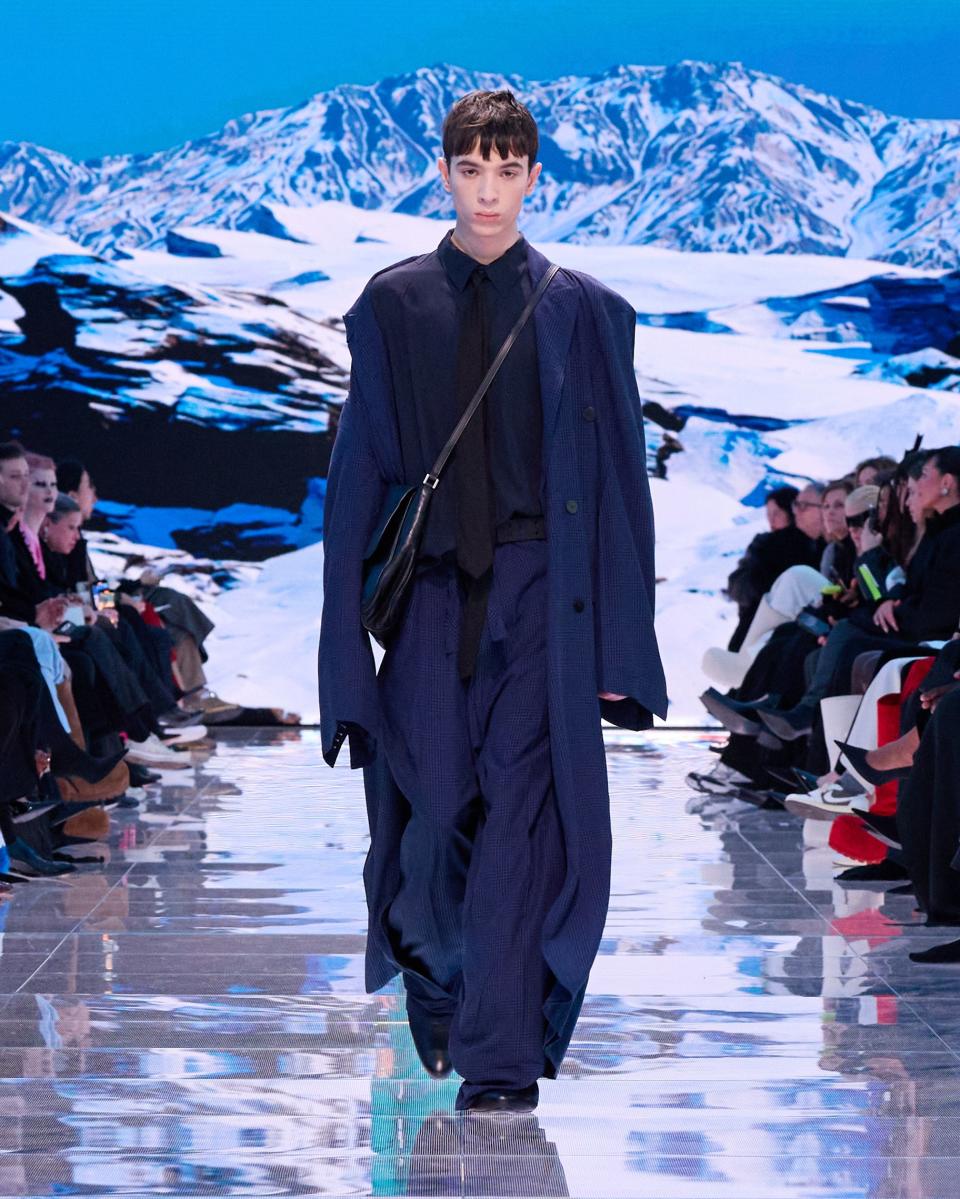
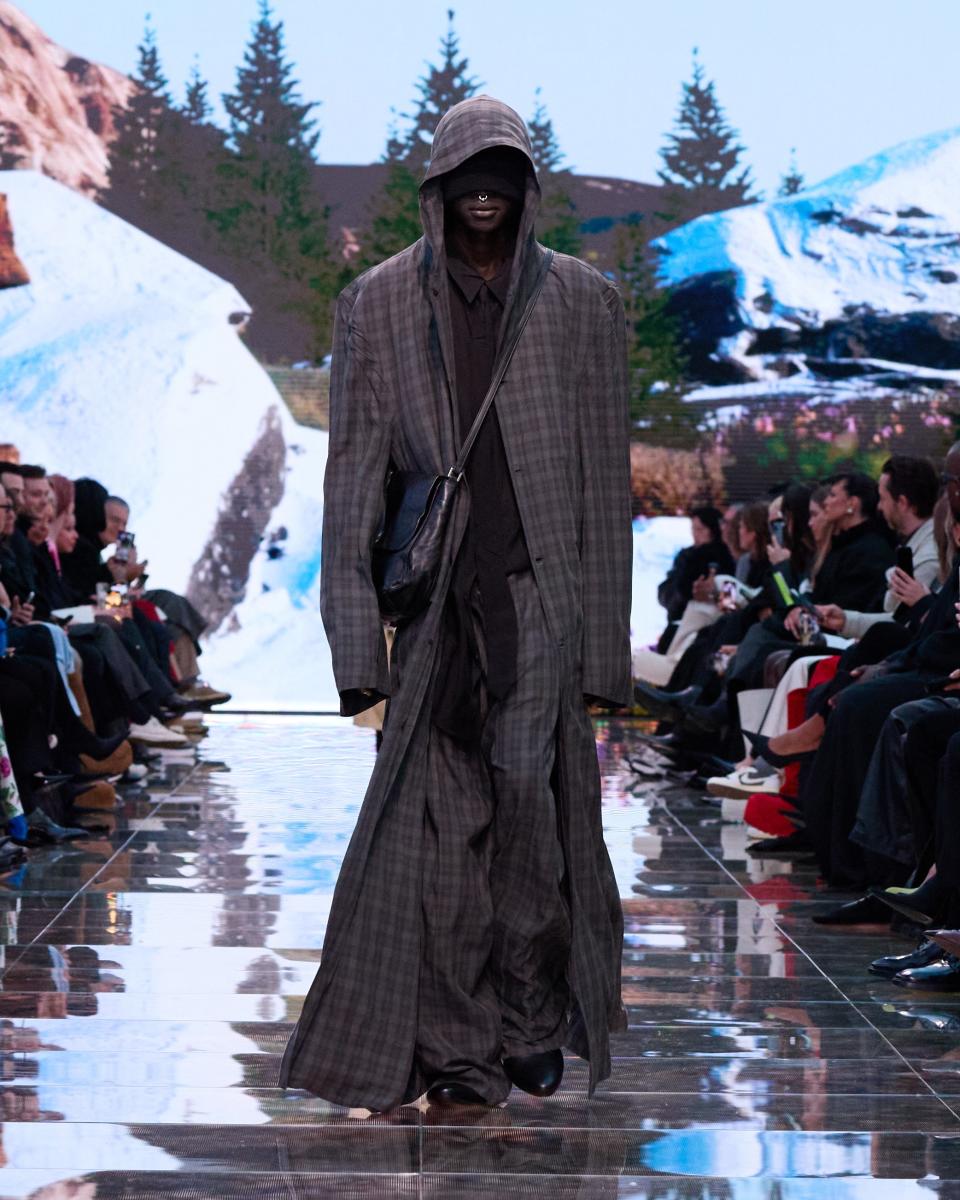
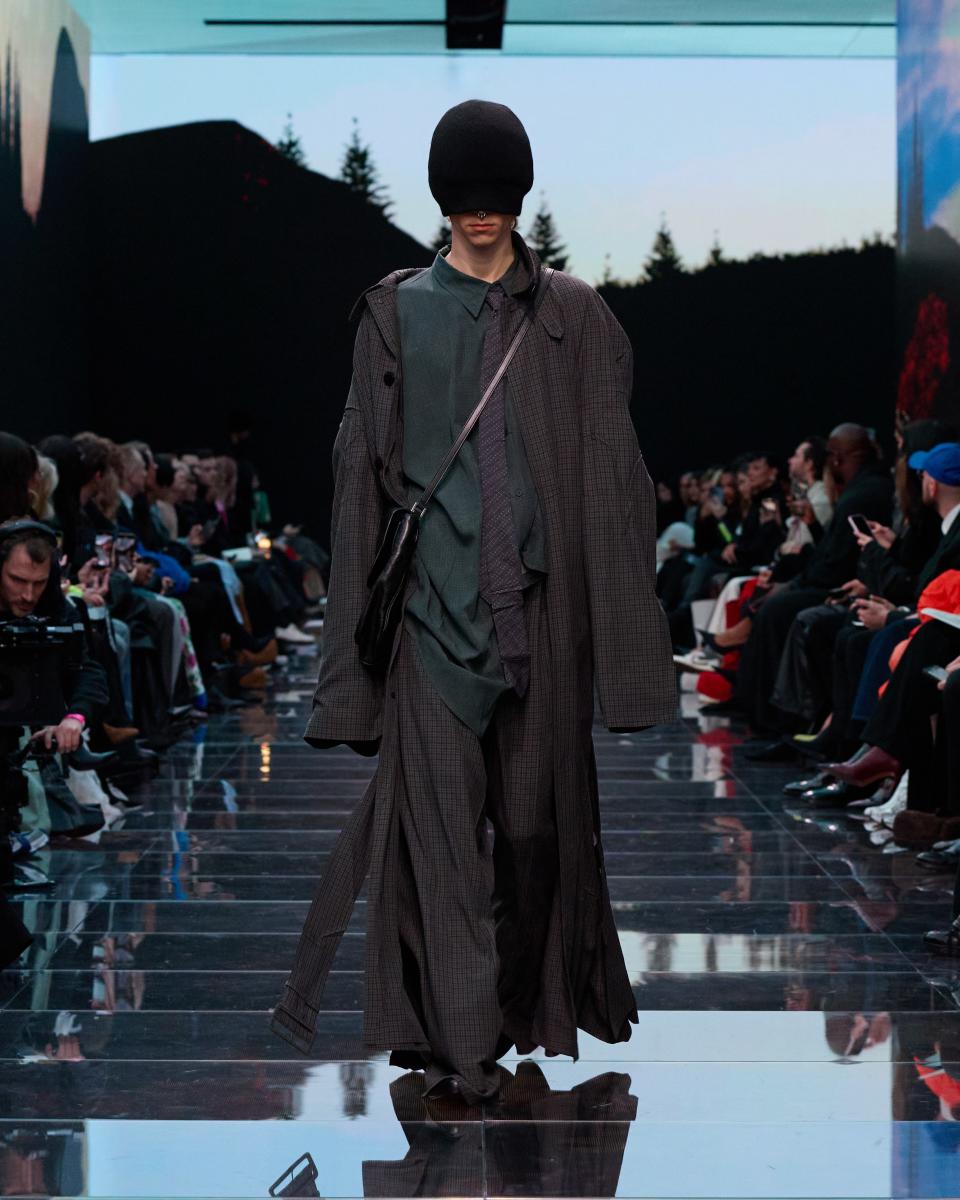
Traditionally, fashion shows begin with ready-to-wear and end with formal, but Demna inverted the lineup, going back in time through his journey as a designer. The set was a fully immersive video-screen environment, like a little lo-fi Sphere built in a box on the grounds of the Hôtel National des Invalides. As the show began, the screens beamed politely calming nature scenes. Set to a screwy, synthy soundtrack composed by Demna’s husband BFRND (which I would highly recommend listening to here), out came oversized suiting, constructed with barely an ounce of weight. (My seatmate, leading Demna-ologist Rachel Tashjian, remarked that they looked almost like the silky lining of blazers and coats that had been turned into the garments themselves.)
Worn with oversized dress shirts and ties long enough to fit Shaq, it was a modern twist in Demna’s ever-evolving exploration of male tailoring, which began in 2015 with heavy, mean suiting cut squarer than Spongebob. Gray store tags dangled off most garments, which could be read as wry commentary on the fact that, well, runway shows are about selling clothes. But Demna is too sincere for that. “I usually keep my actual tags on clothes because I forget to take them off,” he said. “And it became a part of my style.”

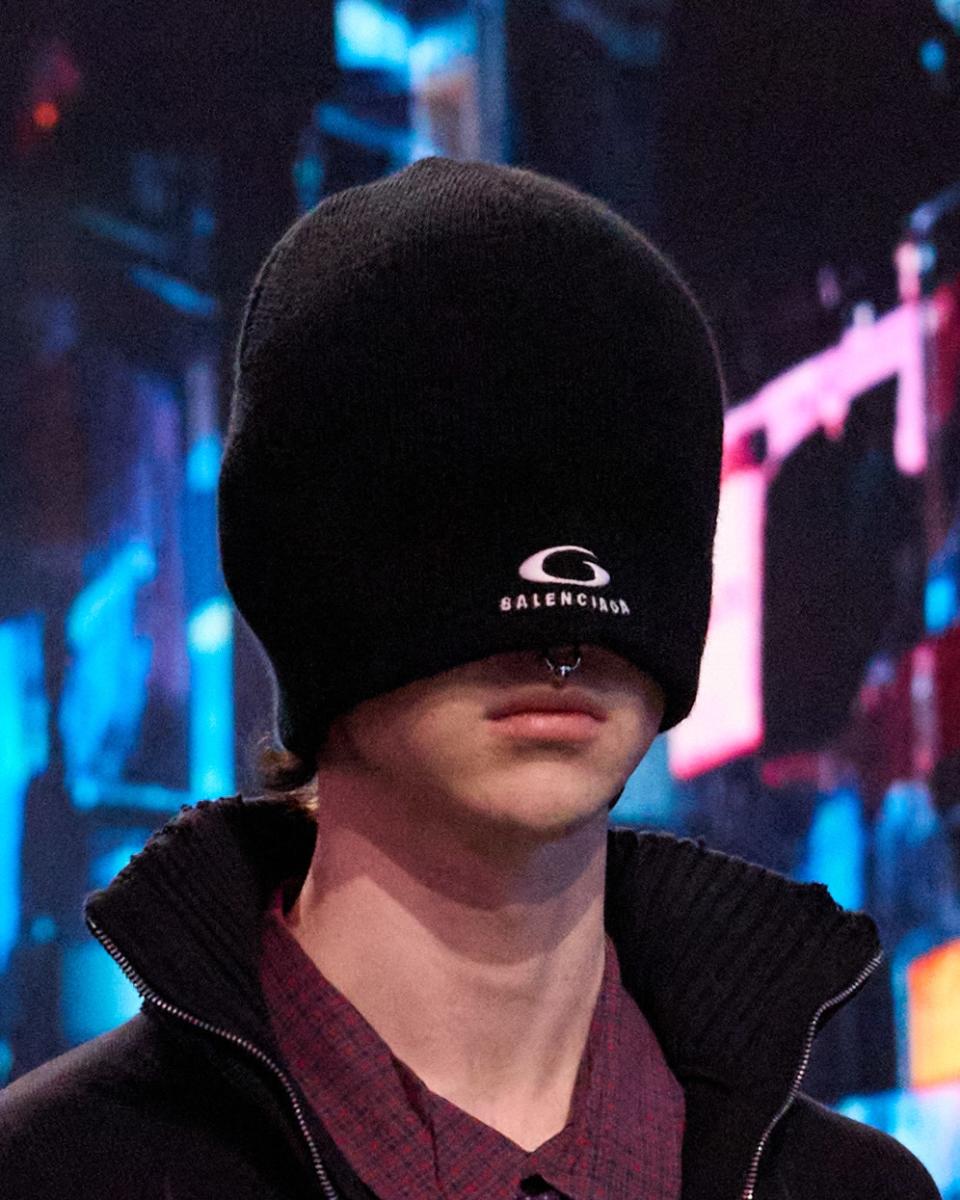
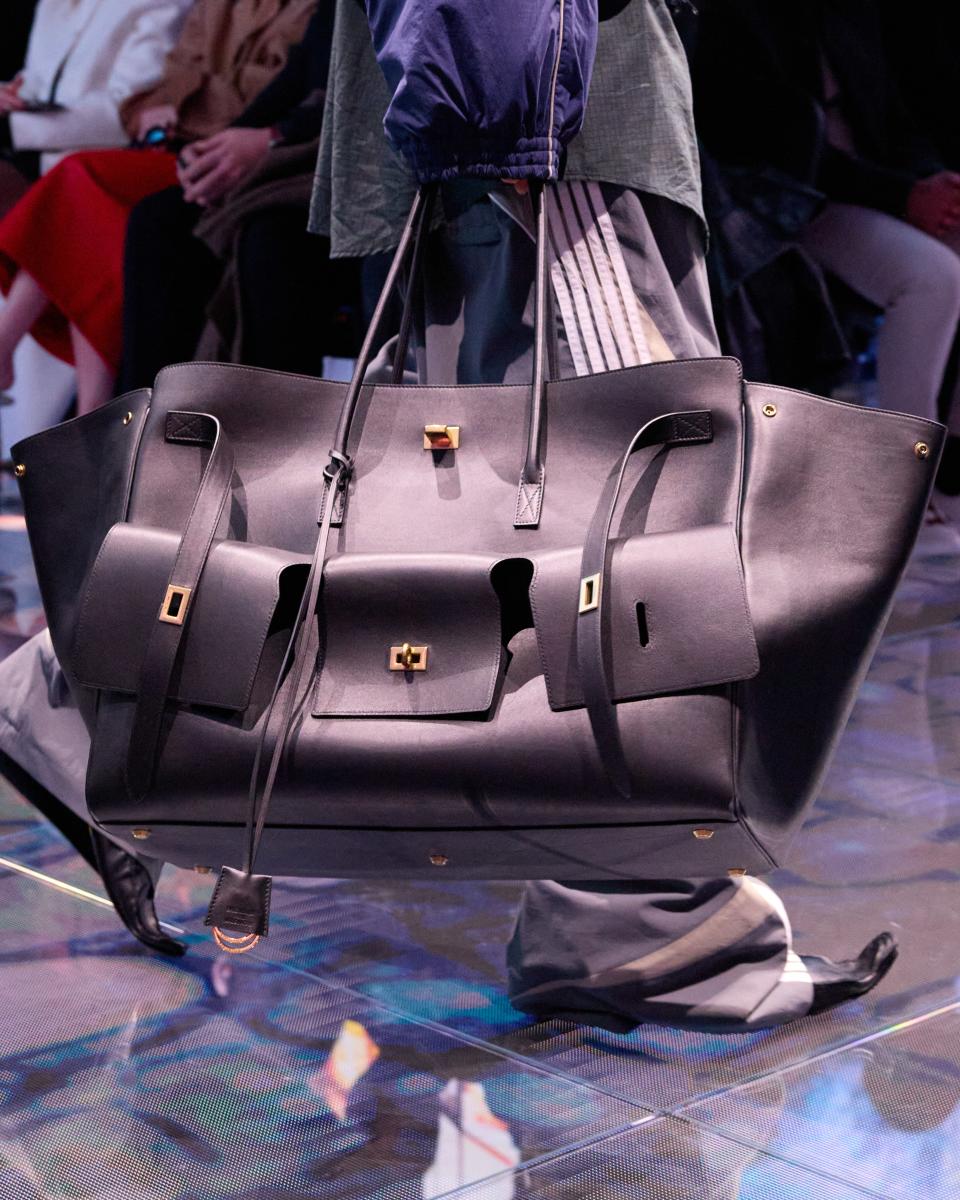
Next came fluid jersey sets and stiff, almost frozen workwear hoodies, along with cheesy windbreakers and pedestrian parkas of the kind worn by the distinctly un-stylish characters that have sparked Demna’s imagination throughout his career. In another personal touch, the models wore black beanies pulled halfway down their faces, representing the disaffected style of Demna’s youth. They could see out of the beanies, apparently. But backstage, Demna added that the face coverings represented a form of protection. A necessary one, as the calming earth scenes yielded to a dystopian tableau of a swarm of seemingly AI-generated TikTok videos. I started to relate to the beanie-clad slackers, along with the models wearing polyurethane wraparound face shields, officially dubbed the “24/7” mask. Demna has embraced face shields to protect himself from cameras; these are to protect us from content. “I just don't want to see all this stuff,” he rued. (He has, he added, figured out how to brick his phone for certain hours of the day.)
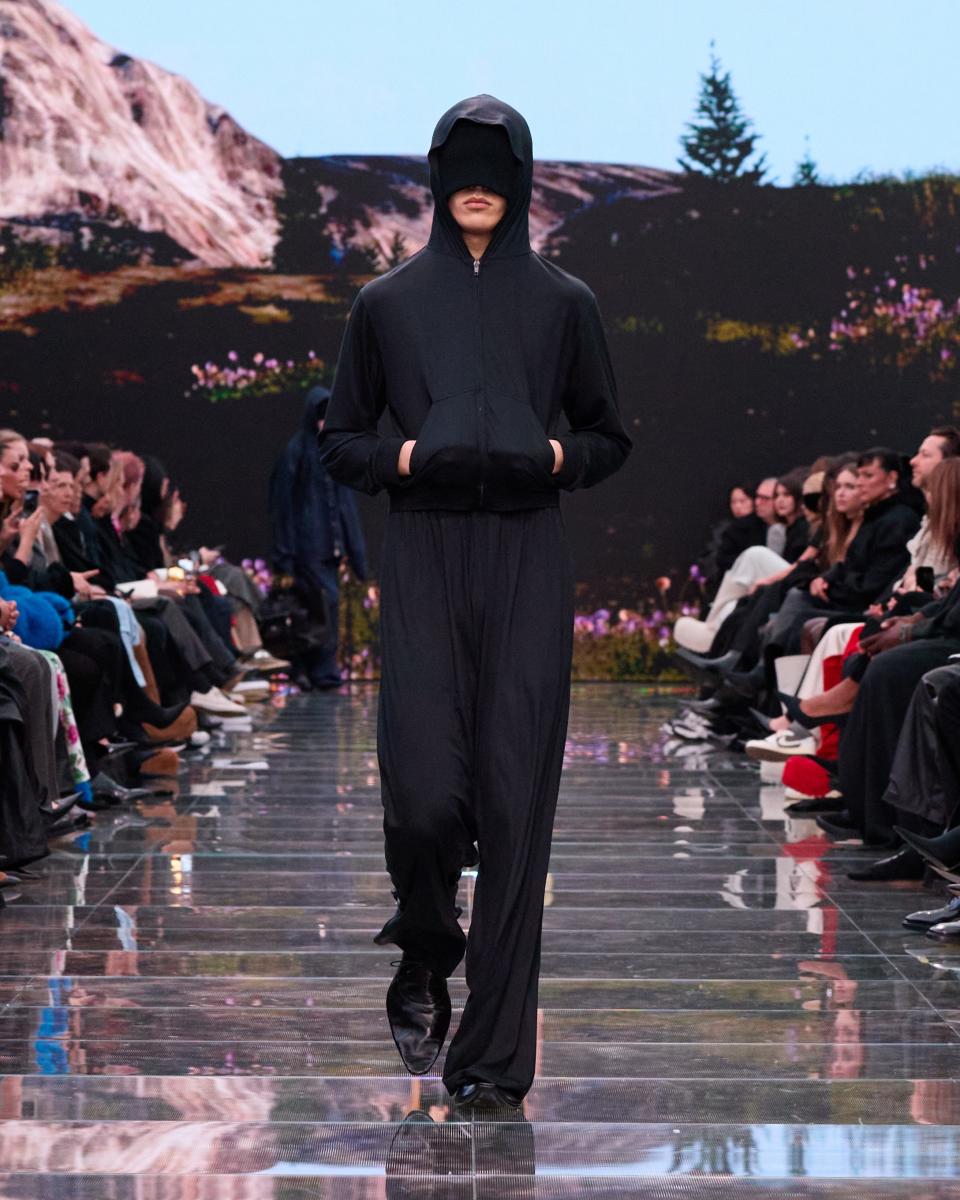
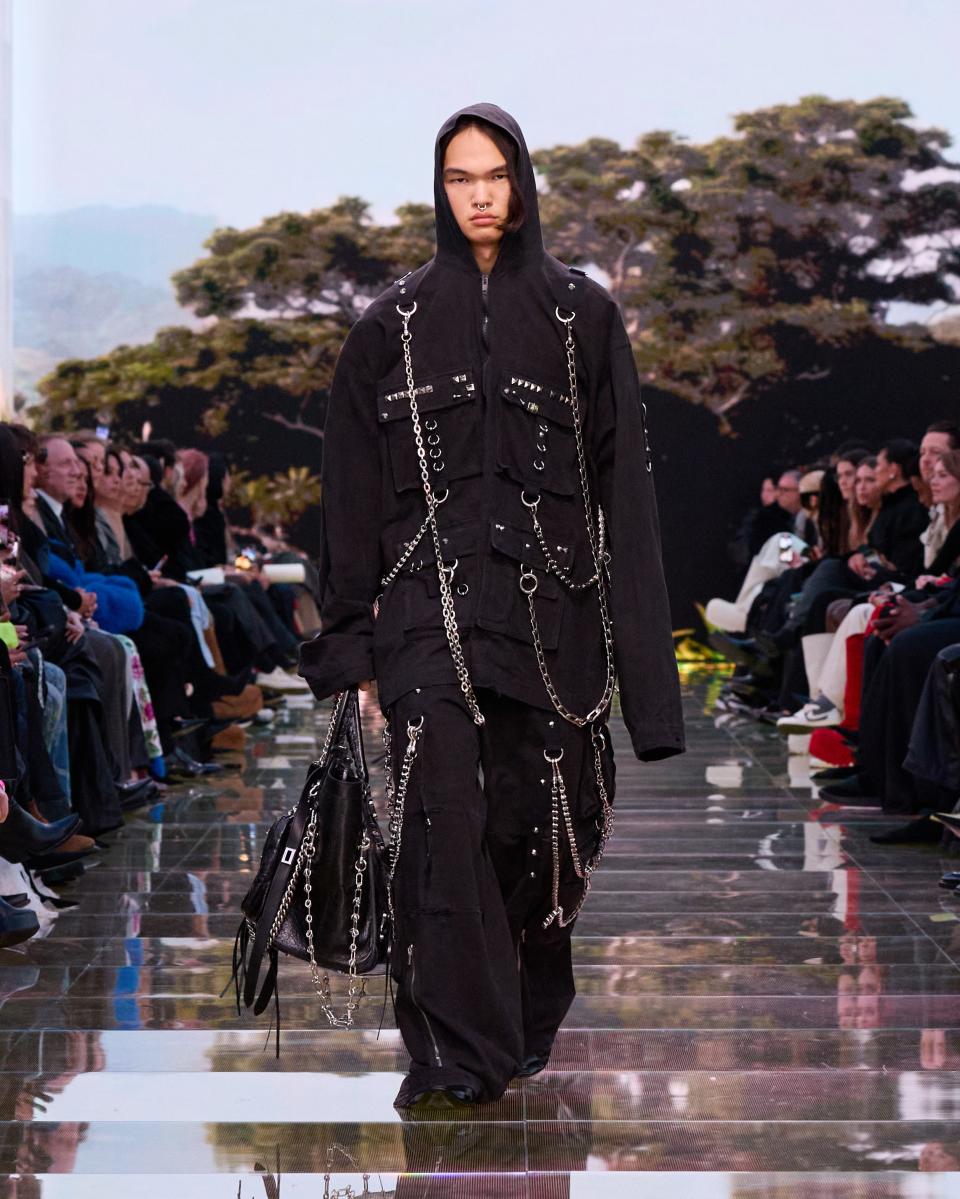
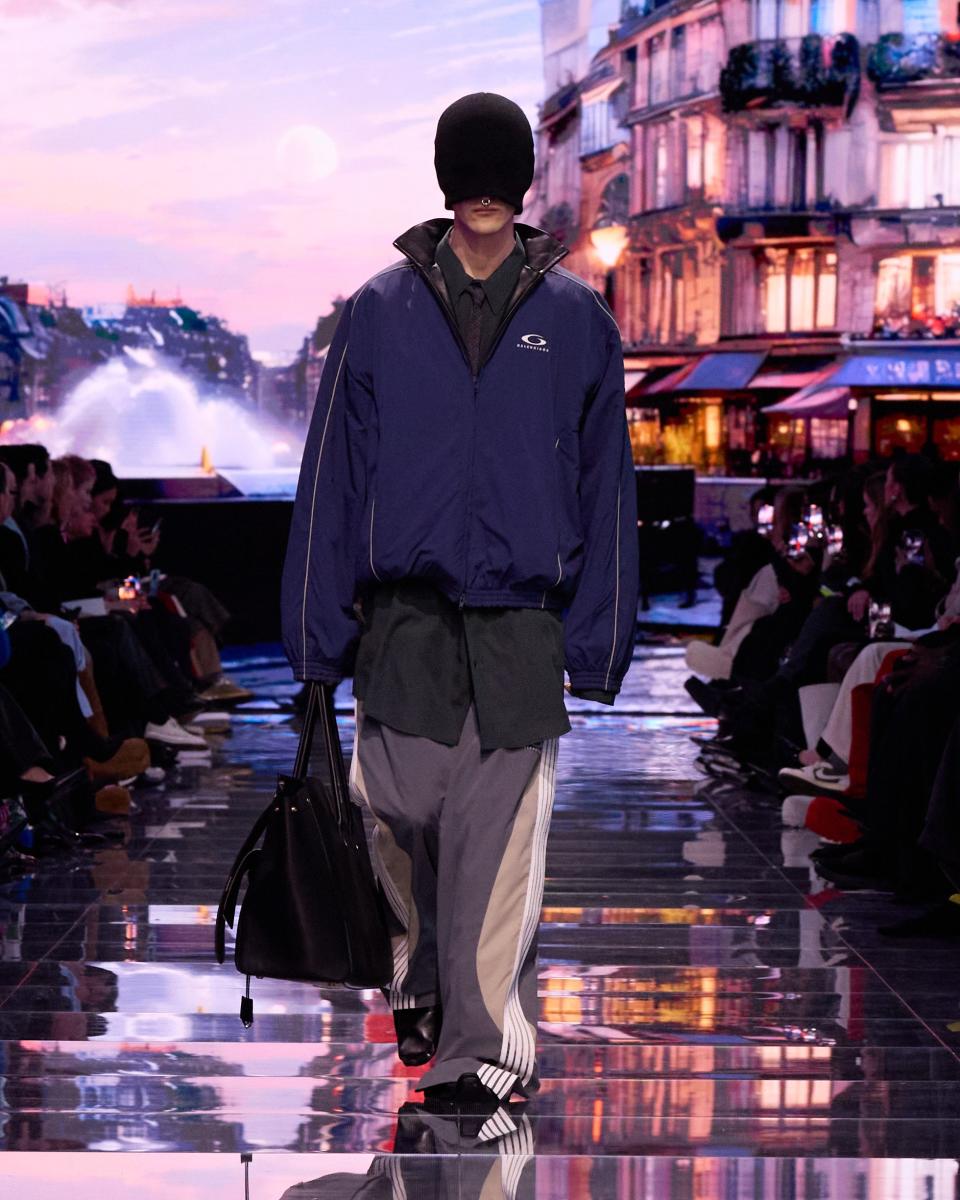
Something Demna understands better than any of his peers is how to constantly push his designs into strange new directions while still selling. (Speaking of peers, Raf Simons was in the front row, wearing what looked like a large black Balenciaga suit.) Demna’s designs are only commercial to the extent that his audience considers them deeply cool, and the designer knows how to keep his tribe of devotees hooked. With—you guessed it—creativity, not compromise. “I think that fashion has to be radical,” he said. “It has to be on the edge, otherwise it's a scam. It's like we are trying to trick people to buy wallets—and that's not what I'm doing here.”
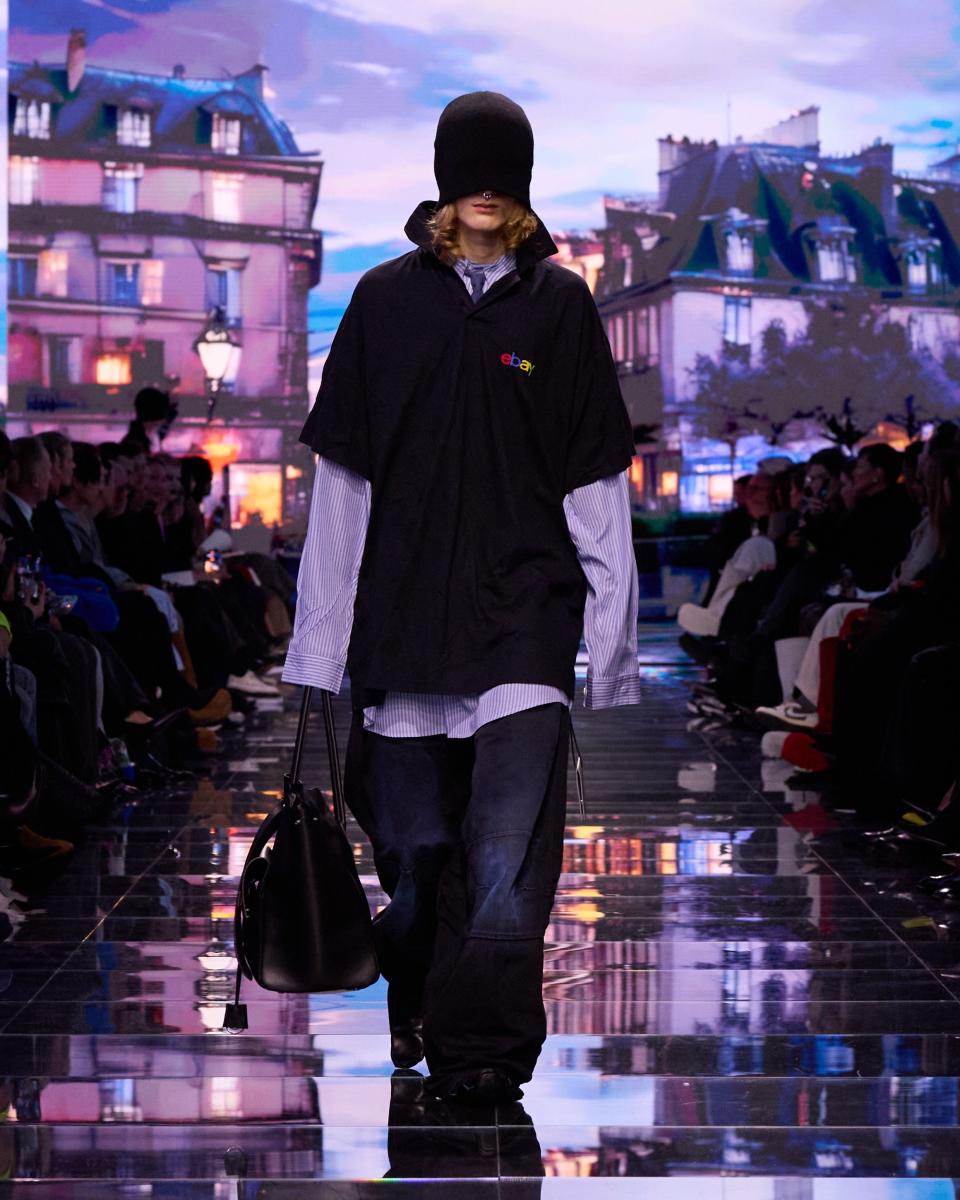
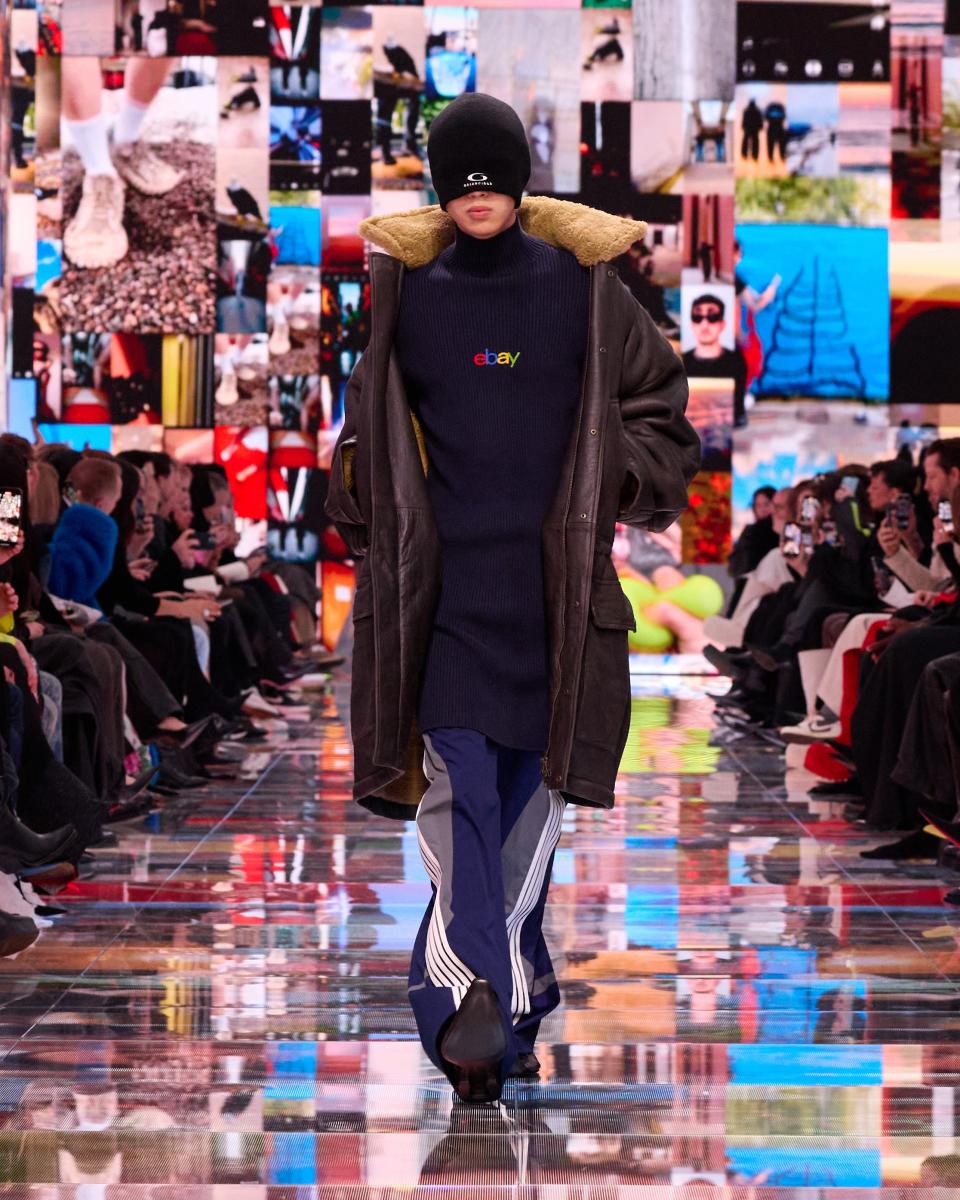
There was plenty of Demna’s sense of humor, but no tricks, in the duffle-sized versions of the bourgeois new Rodeo bag, which will surely go down as the Balenciaga Birkin, part of what he called a “chicness” that he’s thinking about as he plots the future of Balenciaga. But as he continued to explore his past, the man who caused a sensation with a designer DHL T-shirt at Vetements sent out polos and hoodies embroidered with the eBay logo. This, too, was a personal touch on several levels. Demna collects trinkets on the auction site, and Balenciaga sent every guest their own eBay sourced souvenir, selected by Demna himself, with their invite. Mine was a kitschy and great bedazzled keychain, which arrived in a cardboard box with a note listing its price (18.95 EUR) and a disclaimer that it is not an officially licensed Balenciaga product. “The value” in these objects, Demna said, “is the story behind that we would never know. That's mystery. Nothing is mysterious anymore.”
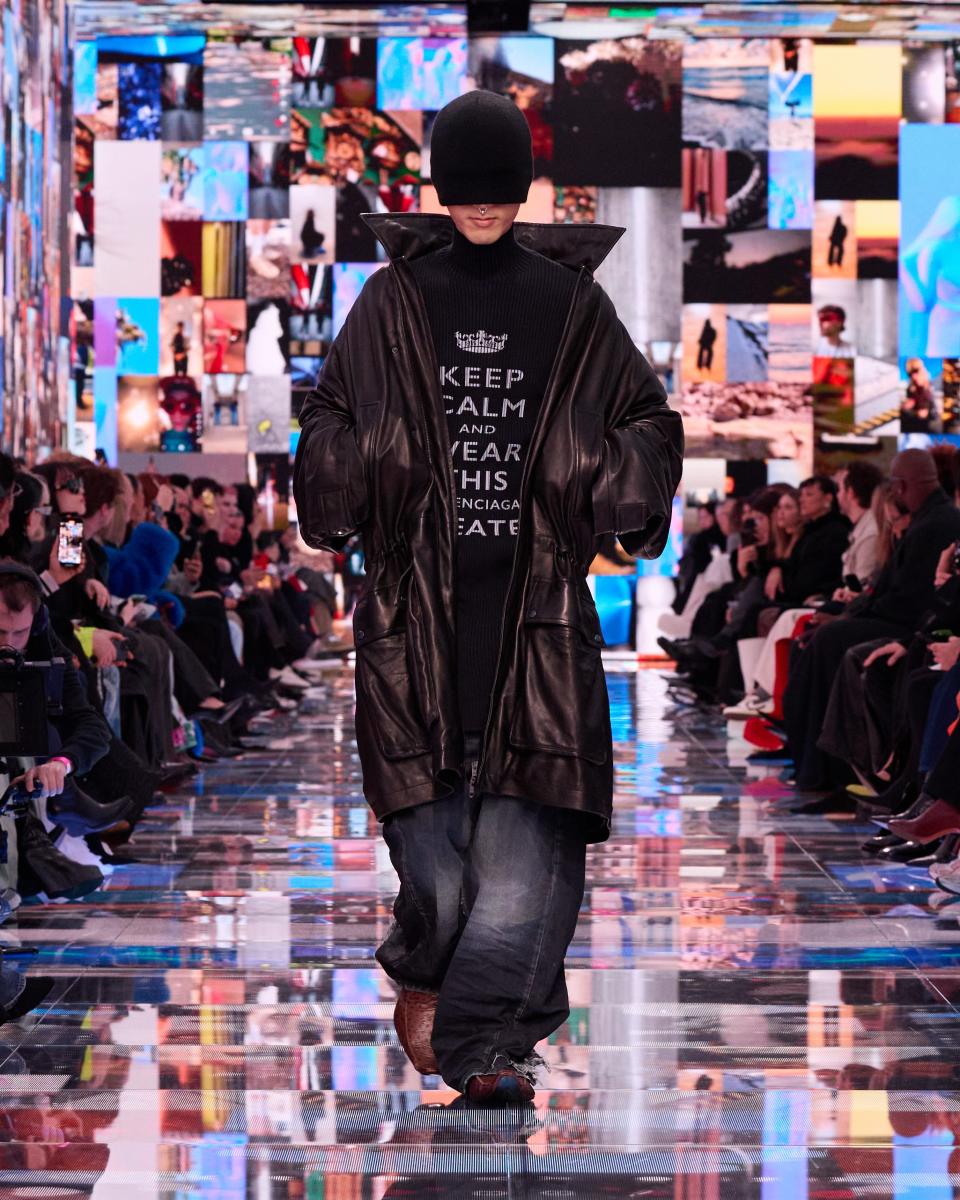
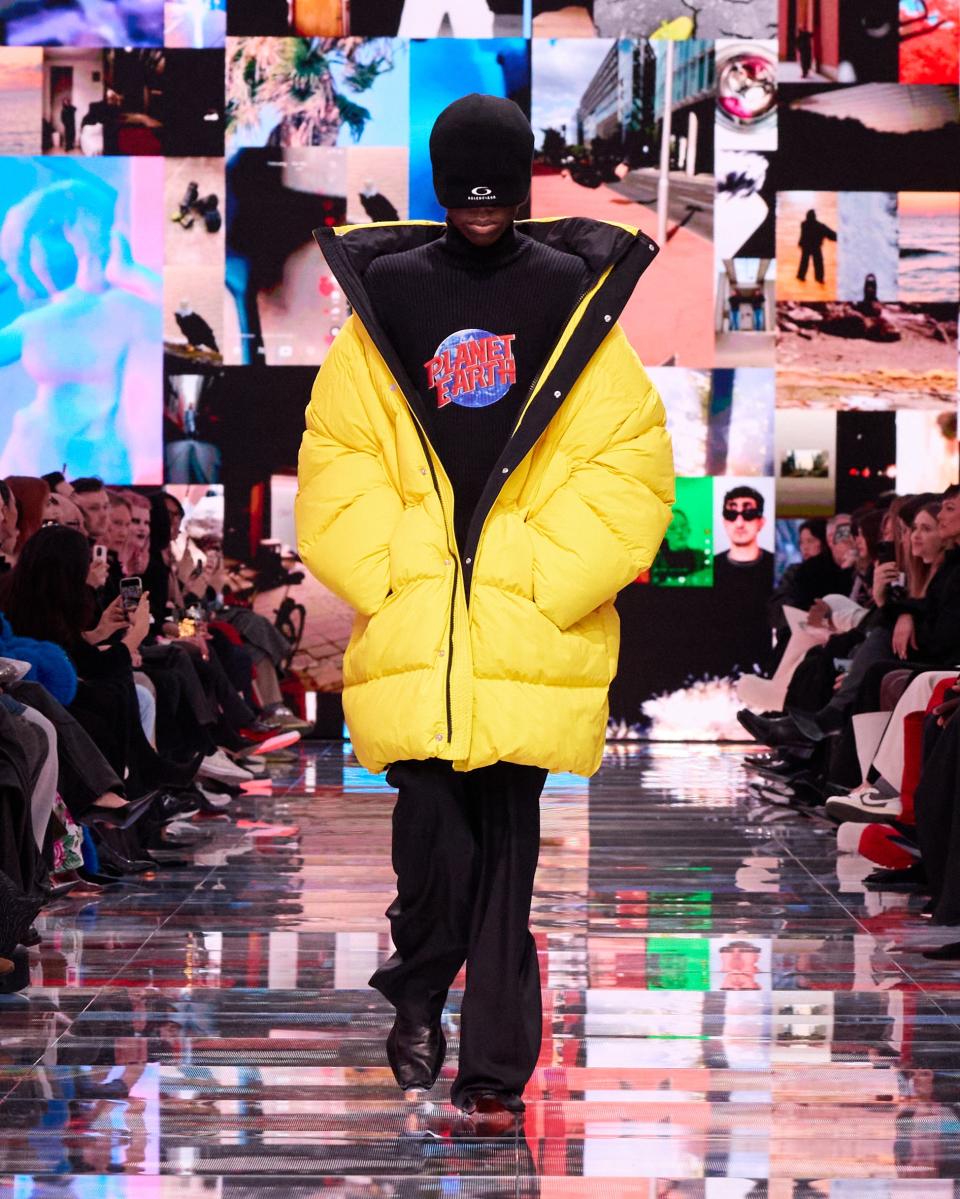
When nothing is mysterious, there is also value in the weird. The TikTok panic attack around us faded into static noise as the show closed with an ode to Demna’s earliest fashion experiments. Calling back to his first fashion job at Maison Margiela, where he learned to drape found clothing on a body to create new forms, these were “work in progress” garments, like two blazers taped together around a model’s torso to create a franken-jacket, alongside “one minute designs” where various found clothing (hoodies, tube tops, those bras and undies) were hastily thrown together and sewn into a final garment. Demna has defined the last decade of fashion, but the readymades looked about as radical and surprising today as ever. What’s changed is that now, unlike then, there’s no question that Demna’s freaky, DIY ideas belong on the runway in Paris. Creativity is luxury.

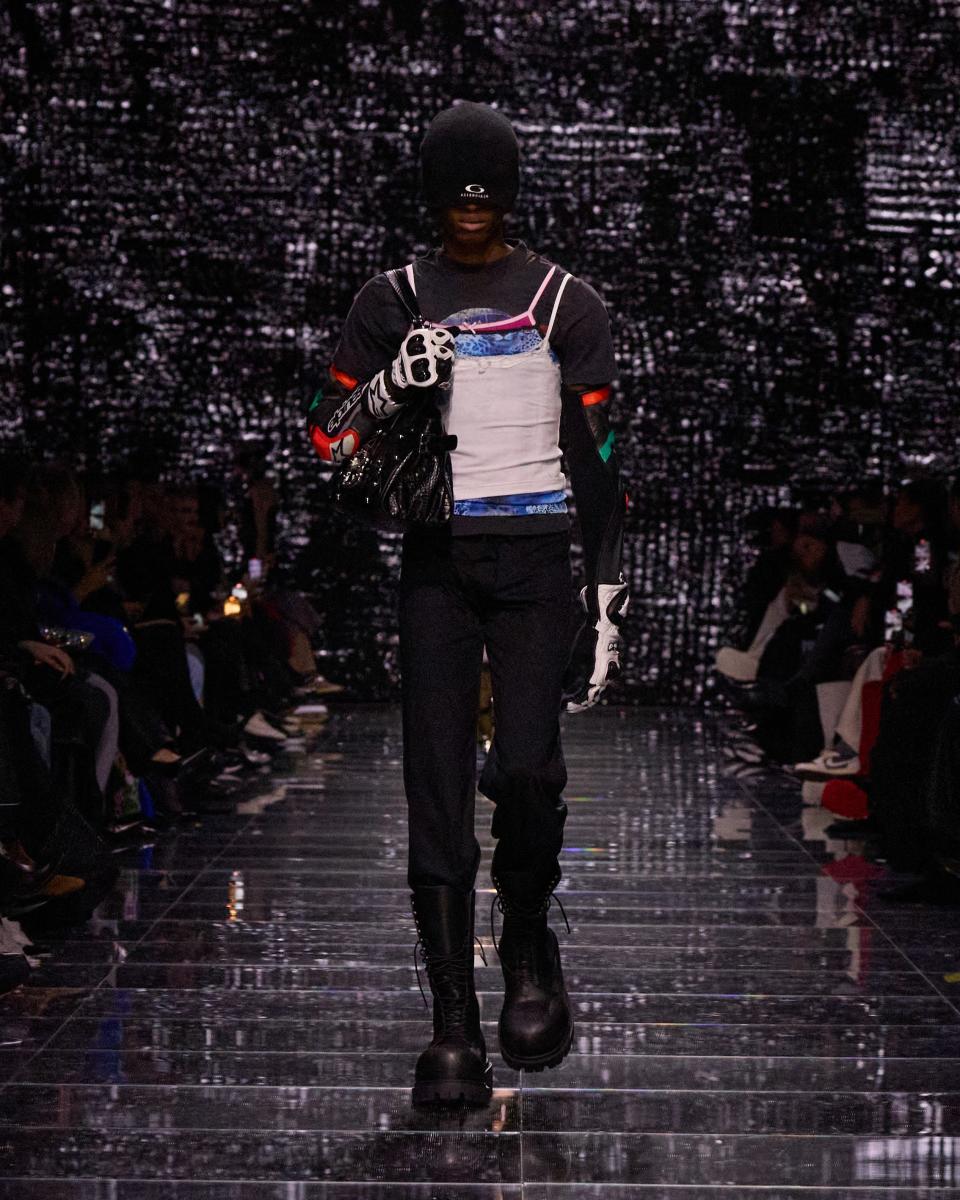
Backstage, Demna struck a confident tone as he entered decade two. “You like it, you don't like it, whatever,” he said. “This is my style. This is the aesthetic I've been hammering for 10 years, and I'm going to continue doing that as long as I do fashion.”
See all of our newsletters, including Show Notes, here.
Originally Appeared on GQ

